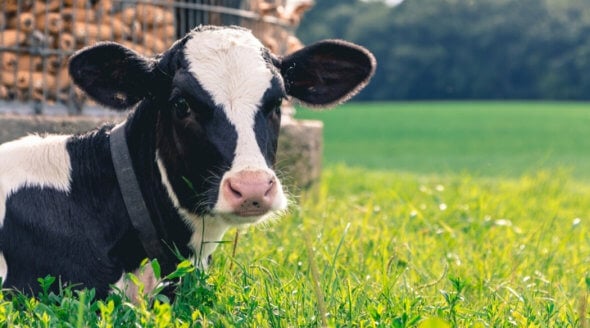Animals Used for Wool
Around the globe, the wool industry exploits, abuses, and kills sheep, treating them as nothing more than wool-producing machines. These intelligent, gentle individuals are shown little in the way of respect and compassion.
Abused for Wool
PETA and our international affiliates have exposed rampant cruelty in shearing sheds in the UK, Australia, the US, and South America. Watch the 14 video exposés here.
In England, workers kicked, punched, and stamped on sheep’s heads, jabbing them in the face with sharp metal clippers and leaving huge gashes on their bodies that were later crudely sewn up with a needle and thread – and no painkillers whatsoever.
The production of all wool – no matter where it originates or what “ethical” or “responsibly sourced” claims are made on its label – spells extreme suffering and a terrifying death for millions of sheep and lambs.
Mutilation Without Painkillers
When lambs are just a few weeks old, their ears are hole-punched and their tails cut off. Farmers use knives, hot irons, or tight clamps to sever parts of the animals’ bodies, often without painkillers.
Workers castrate male lambs by either making an incision in their scrotums and cutting their testicles out or using a rubber ring to cut off the blood supply – one of the most painful methods possible.
 Patty Mark / ALV.org.au
Patty Mark / ALV.org.au
In Australia, in a barbaric procedure called “mulesing”, workers force lambs onto their backs, restrain their legs between metal bars, and carve huge chunks of flesh from their backsides.
Death From Exposure
Hundreds of thousands of lambs die from exposure or starvation before they’re 8 weeks old. In the UK, 15 per cent of lambs don’t survive infancy. But those who do are hardly lucky. From the ordeal of the shearing shed to the hot summer months when they may collapse from heat exhaustion because of their unnaturally heavy wool, sheep are forced to lead unbearably harsh lives.

More Than a Close Shave
The shearing process is usually a violent and terrifying experience for sheep. Shearers are paid by volume, not by the hour, which encourages fast, rough handling that leaves gaping wounds on the animals’ bodies.

An eyewitness saw shearers on an English farm throwing the defenceless and fearful animals around, twisting their necks and limbs, and slamming their heads and bodies into the wooden floors.
An investigation also documented that sheep on a UK farm died during shearing from what a farmer called a “heart attack”.
Killed and Skinned Alive
An exposé of sheep farms in Chile shows workers stabbing fully conscious sheep in the neck. The animals kicked and struggled as they bled to death. Video footage also shows a sheep being skinned alive.
Destined for Slaughter
Once their wool production declines, millions of sheep are exported on extremely crowded, filthy, disease-ridden ships to face a terrifying slaughter abroad. These live-export voyages often last weeks, during which many sheep perish. The survivors are typically dragged from the ships and thrown into the backs of lorries and cars. Most animals’ throats will be cut while they’re still conscious.

Wool Is One of the Most Environmentally Damaging Materials
According to the groundbreaking “Pulse of the Fashion Industry” report, wool is one of the five most environmentally damaging materials. Since it’s one of the lucrative co-products of the unsustainable meat industry, this is hardly surprising. Land has been cleared and trees have been cut down to make room for grazing sheep, which has led to erosion, increased soil salinity, and decreased biodiversity. Here in the UK, environmentalists are highlighting the negative impact of sheep farming on the land.
What You Can Do
Never buy wool. Before you buy clothing and other items, check the labels, and if they mention “wool”, look for an animal-free alternative.
Goats, rabbits, antelopes, alpacas, and other animals are victims of the fashion industry, too, so please also steer clear of mohair, cashmere, angora, and all other fibres that are stolen off animals’ backs.
If you know someone who still wears wool, please speak up for sheep by explaining how they’re exploited in the wool industry and suggesting cruelty-free alternatives.
FACTBOX
- A sheep can recognise the faces of at least 50 other sheep and can remember 50 images for up to two years.
- Sheep “dip” (a commonly used insecticide/fungicide) is highly toxic and presents a major pollution risk. For example, in 1995, it killed 1,200 fish in Scotland after a farmer dumped it into a stream.
- H&M, Adidas, UNIQLO and Perry Ellis are just some of the companies that have pledged not to use wool from lambs who have been mulesed.
- Enteric fermentation, mainly from sheep, is responsible for more than 90 per cent of New Zealand’s methane emissions.
- Environmentalists suggest that sheep farming in the UK has led to widespread destruction of the natural ecosystem, causing problems such as soil erosion and flooding.

